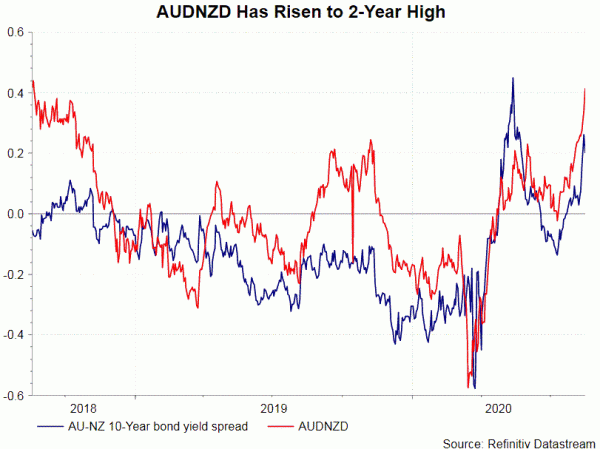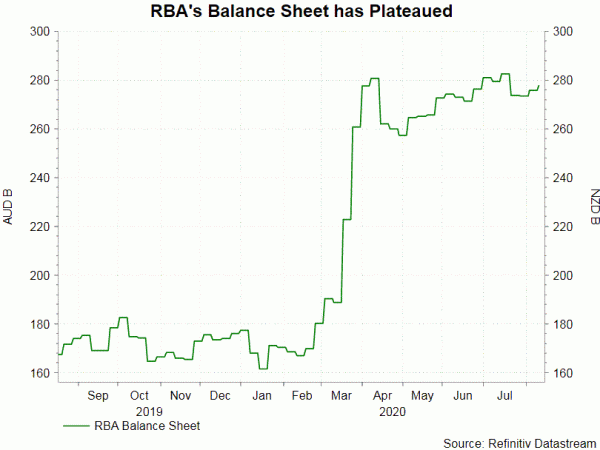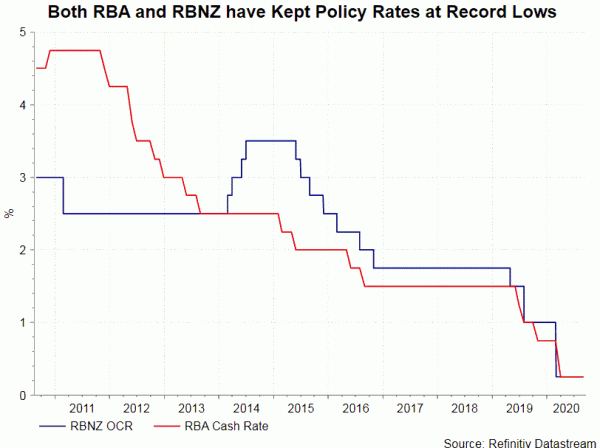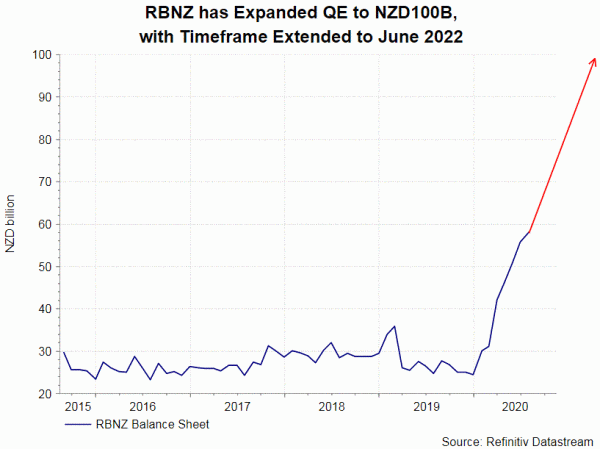Recent strength in Australian dollar has sent AUDNZD to the highest level in 2 years. Notwithstanding the second wave of coronavirus outbreak, and the renewed lockdown measures, in Victoria, Aussie has remained firm. While all major currencies have appreciated in light of the broad-based USD weakness, AUD is the strongest with over 25% bounce since the sharp fall in mid-March. Against NZD, AUD has risen over +7% since mid-March, of which 3% was made in the first two weeks of August. We believe that the key driver of the AUD’s strength against NZD is monetary policy divergence between RBA and RBNZ. Yield differential has been the driver of AUDNZD in coming months. Recent rally, however, appears overextended as the renewed lockdown measures in Victoria should likely decelerate Australia’s recovery which RBA has not taken into full consideration.
The RBA minutes for the August meeting, released earlier today, affirmed that “there was no need to adjust the package of measures in Australia in the current environment”. It, however, continued to agree to “assess the evolving situation in Australia and did not rule out adjusting the current package if circumstances warranted”. Testifying before a parliamentary committee last week, RBA Governor Lowe largely reiterated the stance of Statement on Monetary Policy released in August. RBA expected GDP to contract around -4% in 2020 and then rebound +2% in 2021. Concerning the monetary policy path, Lowe suggested that the central bank “could make some adjustments” but these would not “get much traction”. He added that any further easing would likely involve lowering the cash rate target to 0.1% and expanding purchases of longer duration bonds, instead of adopting negative rates. He continued to emphasize the importance of ongoing fiscal support. On the AUD, Lowe suggested that exchange rate is broadly in line with fundamental.
The August RBNZ meeting was more dovish than expected. The central bank surprisingly expanded QE, the Large Scale Asset Purchase (LSAP) program, by +NZD 40B, to NZD 100B (cap). The timeframe for the buying has been extended to June 2022 (from June 2021). RBNZ added that the buying would be front-loaded in order to suppress market rates. Although we had anticipated QE expansion and extension, our forecast was an increase to NZD 80-90B. While the OCR stayed unchanged at 0.25%, the central bank reinforced the intention to adopt negative interest rates. At last week’s meeting, RBNZ outlined additional stimulus tools besides QE. These included negative OCR, direct funding for retail banks at near-OCR via a Funding for Lending Program, and foreign assets purchases. The members also expressed concerns strength in New Zealand dollar, warning that “a rise in the New Zealand dollar exchange rate has moderated local exporters’ incomes”.
While both RBA and RBNZ have pledged to add more stimulus should economic recovery turn out slower than expected, the former has stressed the importance of fiscal policy and suggested that not much can be done from the monetary front. By contrast, the latter has recently expanded QE and brought negative interest rates to the table.Yield differential has been, and could remain, the driver of AUDNZD in coming months. The major downside risk to further rise in the pair is the second wave of coronavirus outbreak. We doubt if the RBA has taken into account the drag of Australia’s recovery which would likely be brought about by the lockdown measures in Victoria.
















